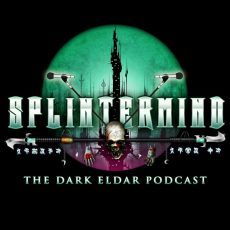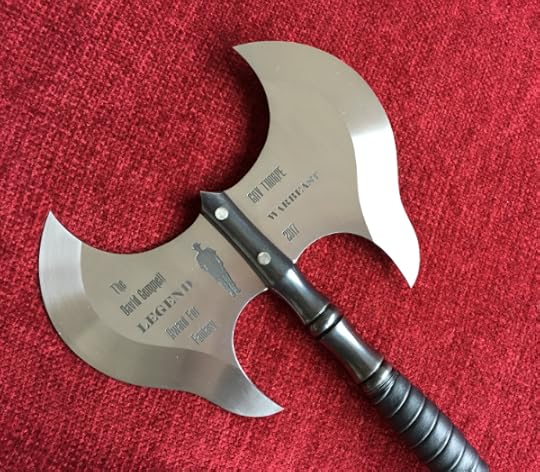Gav Thorpe's Blog, page 4
August 19, 2017
Cryptid Clash: Ban-Manush vs. Buru
 Most people have a few skeletons in their closet from their teenage years – things they’d rather keep secret in their adult life. I mean, come on, I’m sure we all learned the lyrics to Stutter Rap by Morris Minor & the Majors and could name all of the different types of sail on a Napoleonic two-decker ship of the line*, right? Right guys? But then there were the murkier activities such as miniatures gaming – maybe it’s just a phase…
Most people have a few skeletons in their closet from their teenage years – things they’d rather keep secret in their adult life. I mean, come on, I’m sure we all learned the lyrics to Stutter Rap by Morris Minor & the Majors and could name all of the different types of sail on a Napoleonic two-decker ship of the line*, right? Right guys? But then there were the murkier activities such as miniatures gaming – maybe it’s just a phase…
*I’ve mentioned before my Hornblower geekery.
Of all my teenage obsessions, I’m not embarrassed to say I dabbled with a World of Strange Phenomena – the twilit realm of the Fortean Times. In fact, I only ended my subscription last year when space at home became an issue (because obviously as a collector of ALL things, I haven’t been able to throw away my 20 years of back issues).
“Fortean Times is a monthly magazine of news, reviews and research on strange phenomena and experiences, curiosities, prodigies and portents.
You’ll need a sense of adventure, curiosity, natural scepticism and a good sense of humour. Every month, Fortean Times takes you on an incredible ride where you’ll enjoy learning about the most fantastic phenomena on earth.”
 A regular feature of the magazine is sightings of Cryptids – “an animal whose existence or survival to the present day is disputed or unsubstantiated” – think Nessie, the Beast of Bodmin Moor, the Yeti etc. Over the years I’ve gained a passing knowledge of the cryptozoological world, but nothing in-depth.
A regular feature of the magazine is sightings of Cryptids – “an animal whose existence or survival to the present day is disputed or unsubstantiated” – think Nessie, the Beast of Bodmin Moor, the Yeti etc. Over the years I’ve gained a passing knowledge of the cryptozoological world, but nothing in-depth.
So when fellow Black Library author Josh Reynolds asked me if I’d like to contribute to a Cryptid Vs Cryptid series of novellas he was editing, I jumped at the chance, my mind racing with ideas for stories. This was then followed by the realisation I’d have to do some actual proper research to find just the right cryptids to fit my story. Obviously this justified the many boxes of the Fortean Times still in the garage.
After a few evenings of leafing through back issues for inspiration, I’d found references to a few potential cryptids, so then it was over to google and wiki, and a world of cryptozoology that I didn’t know existed. It’s a bit like wiki – you find yourself clicking links and spending hours getting deeper and deeper into the topic until you suddenly realise you’re no longer researching cryptids, but learning about the Dree fertility festival of the Apatanis of the Lower Subansiri district of Arunachal Pradesh in India.
If you want a few places to get started, take a look at these websites:
NewAnimal.org
Cryptoworld
Cryptomundo
Cryptozoological News
Cryptidz.wikia
 And if you like cryptid news and comedy, I would highly recommend listening to The Cryptid Factor podcast, hosted by Rhys Darby (of Flight of the Conchords fame), and friends David Farrier, Dan Schreiber and Leon Kirkbeck. It’s one of those podcasts that make you laugh out loud on the bus, ensuring no-one wants to take the seat next to you.
And if you like cryptid news and comedy, I would highly recommend listening to The Cryptid Factor podcast, hosted by Rhys Darby (of Flight of the Conchords fame), and friends David Farrier, Dan Schreiber and Leon Kirkbeck. It’s one of those podcasts that make you laugh out loud on the bus, ensuring no-one wants to take the seat next to you.
The two cryptids I eventually chose for my story were Ban-manush and Buru (descriptions below courtesy of Wikipedia).
Ban-manush: Ban-manush is the mythical bi-pedal cryptid Nyalmo which has been spotted in Bangladesh measuring at 20 feet (6.1 m) tall. Its name means “ape man” in Indo-Aryan and is one of many variations of the mythical abominable snowman in South Asia.
Buru: The Buru was an aquatic reptile said to have lived in Ziro valley, a small town in the state of Arunachal Pradesh, India, at some undefined time in the past.
My novella, Conquest of the Nu World, is book two in the Cryptid Clash Series, and you can buy the eBook now for just $3.99.
“A myth,” said Doctor Tanzi, shaking his head in disbelief. “Superstition. Folklore. The ban-manush.”
Ninety-eight light-years away, the terraformed colony planet Goloka has gone silent. Azavedo Explorations dispatches a team of mercenaries and middle-management to investigate.
There is something in the forest. The colonization process should have filtered out apex predators. Humanity should be at the top of the food chain.
And yet, there are two greater hunters stalking them…
Buy The Book
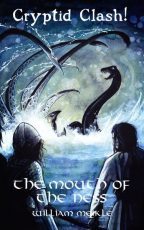 The Cryptid Clash series includes titles from David Annandale, C.L. Werner, Nikki Nelson-Hicks, and Josh Reynolds, as well as William Meikle’s Loch Ness Monster vs. Kraken story, The Mouth of the Ness, which is already available to purchase.
The Cryptid Clash series includes titles from David Annandale, C.L. Werner, Nikki Nelson-Hicks, and Josh Reynolds, as well as William Meikle’s Loch Ness Monster vs. Kraken story, The Mouth of the Ness, which is already available to purchase.
I really enjoyed writing this novella as it’s such a different subject to my usual writing. And obviously I can now re-start my subscription to the Fortean Times, fully able to justify the space in the garage. I wonder if I can also claim it as a work cost…
Let me know what you think of the story in the comments!
**To make sure you don’t miss out on any blog posts, you can keep up-to-date with everything Gav by signing up to my monthly newsletter. As a bonus, every other month I randomly pick a newsletter subscriber to receive a free signed copy of one of my books.**.
Please Feel Free to Share:







August 12, 2017
Nine Worlds Geekfest 2017
 Last weekend saw Kez, Sammy and I make our annual trip to Nine Worlds Geekfest. If you’ve not heard of it, Geekfest is a fan-based convention covering a multitude of geekdoms:
Last weekend saw Kez, Sammy and I make our annual trip to Nine Worlds Geekfest. If you’ve not heard of it, Geekfest is a fan-based convention covering a multitude of geekdoms:
“Nine Worlds is a big festival for all kinds of geeky interests: academia, boardgaming, books, comics, cosplay, crafting, creative writing, entertainments, fandoms, fantasy, fanworks, food and drink, gaming, identity and culture, kids, LARP, meetups, movies, performance art, podcasting, RPGs, science, social gaming, theatre, tech, TV, videogaming, and young adult.”
Here’s a very tiny selection of the 262 sessions, so you can get a feel for how varied it is:
Sex Lives of Goblins – Sex scenes & the different approaches to writing them.
Orkish History 101 – A crash course in Orkish history and culture of Middle Earth: reconstructing Elven revisionism, the real meaning of the work “Uruk” and the cultural importance of swearing!
Women Write About War – A talk about the depictions of warfare in SFF books written by women in the 21st century.
Philosophy & Final Fantasy – Our panelists will dig deep into the characters and quandaries of the franchise, bringing the philosophies contained within to the surface for debate.
Jewish (Mis)representation in the Superhero Genre – This talk will discuss the manner in which Jews, Jewishness and Jewish identity is portrayed, coded, and erased in specific comic book characters, on the screen.
Photo by kind permission of Andrew Merritt
Most of the conventions that I attend are for ‘work’ purposes, and I’m usually scheduled for panels, book signings and workshops, with no break to actually attend sessions for myself. Nine Worlds has always been different – I attend as a fan (and proud geek) and get to enjoy the varied and interesting panels on offer.This year however I received a last minute request from Nottingham-based author Mike Brooks, as he’d had a last minute cancellation on the “Interpretations of an Interstellar Human Future” panel he was moderating. I’ll try and blog separately about the topic, but for now I’ll just say it was an enjoyable panel, with some interesting perspectives from the other panel members.
Super-Sammy, but shhhhh – he’s trying to keep his identity secret.
I managed to attend Podcasting 101, How to Make Your Tabletop Game, and Screenwriting & Scripting the Fantastical – all things that I hope will come in useful in the future. It is still a very Sammy-centric weekend for us, but fortunately children are well catered for with their own play area, specific sessions for children, and several others labelled as ‘kid friendly’. I’ll do a shout out here to Grant Howitt (writer of RPGs such as Unbound, Goblin Quest, and Doctor Magnethands) who did a sterling job of reading to children, without leaving a sobbing wreck or having to apologise for taking a swipe at an over-zealous Sammy.I’ve never been to a more inclusive and friendly event. Consideration is made for those with access needs, the LGBTQIA community is embraced, and there’s no ‘them and us’ with guests and participants. Even the hotel staff dressed up as superheros this year, and had badges declaring “I like anime” etc, so they could be part of the conversation. From our perspective the event went like clockwork, thanks to the hard work of the organisers and volunteers – and a special thanks should go to the kids coordinator Jaime, for taking up that role. When Sammy is a bit older we’ll do our part and volunteer.
The 2018 event may be moving from London to Birmingham, but either way we’ll definitely be attending again. I might even pitch a “Miniatures Gaming 101” session to try and drum up some new recruits!
If you attended Nine Worlds, or the “Interpretations of an Interstellar Human Future” panel, let me know in the comments what you thought of it.
**To make sure you don’t miss out on any blog posts, you can keep up-to-date with everything Gav by signing up to my monthly newsletter. As a bonus, every other month I randomly pick a newsletter subscriber to receive a free signed copy of one of my books.**
Please Feel Free to Share:







August 9, 2017
Cthulhu Wars – The Old Ones Arise
Some years ago now, one of the first Kickstarter projects I backed was Cthulhu Wars by Petersen Games. The huge playing pieces have tremendous appeal, and the idea of Great Old Ones do Risk is an instant sell in my book. That Sandy Petersen, creator of the seminal roleplaying game Call of Cthulhu, was involved clinched the deal, as I doubt there is any games designer quite so well-versed in Lovecraft’s mythos.
Work continues on the Cthulhu Hall of the Gemmell Wing 
August 5, 2017
Splintermind – July 2017
Listen to my interview with Splintermind – a Dark Eldar Podcast – where we discuss Aeldari lore, the nature of the Phoenix Lords, and my novel Jain Zar: The Storm of Silence.
Listen To The Interview
**To make sure you don’t miss out on any blog posts, you can keep up-to-date with everything Gav by signing up to my monthly newsletter. As a bonus, every other month I randomly pick a newsletter subscriber to receive a free signed copy of one of my books.**
Please Feel Free to Share:







August 3, 2017
Imperial Truth – July 2017
Listen to my interview with The Imperial Truth Horus Heresy podcast, where we talk about my history with Games Workshop as well as both Angels of Caliban and Lorgar: Bearer of the Word.
My interview starts at 01:22:17
Listen To The Interview
**To make sure you don’t miss out on any blog posts, you can keep up-to-date with everything Gav by signing up to my monthly newsletter. As a bonus, every other month I randomly pick a newsletter subscriber to receive a free signed copy of one of my books.**
Please Feel Free to Share:







July 28, 2017
July 2017 – Q&A
 This is a compilation of questions that have been emailed and messaged to me recently.
This is a compilation of questions that have been emailed and messaged to me recently.
If you want to ask anything, you can post a comment here or get in touch through the contact page (and newsletter subscribers can just reply to any of my emails).
I’ve been posting Q&As for a while now, so if you’ve found this one interesting, you can look back at previous Q&As here.
Thomas emailed some thoughts about Harlequins, along with this question: I was trying to flesh out my own Masque (called the Purple Rain, because stay classy) and was wondering how those players lived on a day to day basis.
My point is: is it completely mysterious and codified somewhere in the webway or do they just chill casually in a nice big house on some virgin planet?
I see them very much like the wandering troubadours of the middle ages, calling no place home but where they lay their heads. To this end I think they would either have their own ships or ‘work passage’ on the ships of other aeldari by giving performances. If they have any static spiritual home it would be the Black Library, but even that is probably an occasional, temporary sanctuary rather than a base of operations.
It is possible that some Masques might have a little corner of the off-webway to call their own, as you describe, but rather than a single Masque perhaps it would be more like a hunting lodge, shared between and used by passing bands as and when they are in the vicinity.
And Thomas also asked: Why do you answer people’s questions? Do you consider it some kind of customer service, the sole pleasure of chatting about the fluff, maybe another occasion to reflect on what you wrote by hearing someone’s opinion? Just curious.
One of the first things drilled into me when I joined Games Workshop was that if someone has taken the time to write to you, take the time to write back! It’s always good to see what people are thinking about, and sometimes to have my views on things challenged or probed.
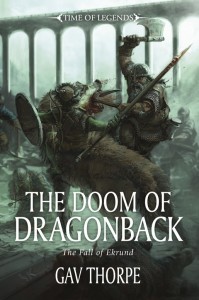 Paddy emailed: I’m just wondering if you have plans to write any more historical Dwarven books like Doom of Dragonback. It’s probably the best written Dwarven book and really captures the spirit of the Old World Dwarves
Paddy emailed: I’m just wondering if you have plans to write any more historical Dwarven books like Doom of Dragonback. It’s probably the best written Dwarven book and really captures the spirit of the Old World Dwarves 
July 26, 2017
Warhammer 40,000 Legends Collection
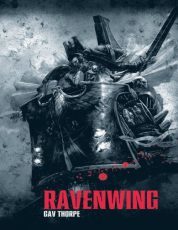 Those of you who are subscribed to the Warhammer 40,000 Legends collection, will soon be receiving issue 24 – book one in my Legacy of Caliban series, Ravenwing.
Those of you who are subscribed to the Warhammer 40,000 Legends collection, will soon be receiving issue 24 – book one in my Legacy of Caliban series, Ravenwing.
If you are new to Ravenwing, you might also like to read my two short stories, Battle Brothers and All Must End, as they shed more light on events happening off-screen. They are both printed in the anthology Lords of Caliban, and Battle Brothers is also available as a separate eBook.
About Battle Brothers
“As the battle-brothers of Fifth Company struggle to keep the Chaos-worshipping forces of the Unworthy at bay in the warrens of Port Imperial, it falls to the elite warriors of the Ravenwing to hunt a mysterious traitor, one of the Fallen. What awaits Sergeant Cassiel and his Black Knights squad in the depths of the corrupted space station?”
About All Must End
“Dark Angels Librarian Harahel undertakes a perilous journey through the warp that endangers his very soul.”
Hungry For More?
If you want to learn more about Ravenwing, you might like to read / listen to these interviews (but be warned, there may be spoilers):
* Podcast Interview with Combat Phase
* Podcast Interview with the Independent Characters
* Video Interview with Le Reclusiam from Black Library Live 2014
* My Dark Angle on the Dark Angels blog post
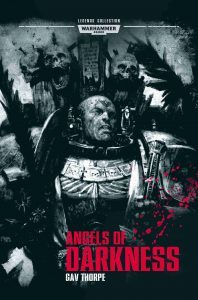 And in case you hadn’t spotted it, you can now buy individual back issues from the Hachette site, so there’s no need for your beautiful shelf of 40K artwork to have any gaping holes in it!
And in case you hadn’t spotted it, you can now buy individual back issues from the Hachette site, so there’s no need for your beautiful shelf of 40K artwork to have any gaping holes in it!
If you’ve already received Angels of Darkness (issue 9) and want to find out more, check out this blog post for more interviews and Dark Angel goodness.
**To make sure you don’t miss out on any blog posts, you can keep up-to-date with everything Gav by signing up to my monthly newsletter. As a bonus, every other month I randomly pick a newsletter subscriber to receive a free signed copy of one of my books.**
Please Feel Free to Share:







July 22, 2017
Structural Engineering – Part Two
***If you haven’t read part one of my ‘Structural Engineering’ blog post, you should do so first, before reading on. Part one can be found here.***
Deconstruction
So much for the traditional approach. I’m sure you’re thinking about all those other books that didn’t do that at all, and were exceptional because of it. That’s up to you. If you think you can pull it off and it genuinely adds to the reader experience you can certainly think of other ways to break up the huge lump of text you’re about to deliver to an agent or editor.
Even within the chapter structure above, there are subdivisions of scenes to consider and macro-presentational features like dividing the volume into Books or Acts with their own section breaks and titles.
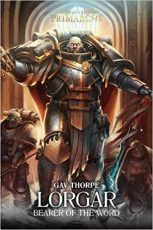 These should serve a purpose. With Lorgar, for instance, the three book structure not only allows me to label with Bible-style headers, it highlights the three-act structure aligned to the three prominent phases of Lorgar’s life contained within the plot. It also gave me the placement of the interstitial scenes that give context to the historical narrative.
These should serve a purpose. With Lorgar, for instance, the three book structure not only allows me to label with Bible-style headers, it highlights the three-act structure aligned to the three prominent phases of Lorgar’s life contained within the plot. It also gave me the placement of the interstitial scenes that give context to the historical narrative.
Time jumps – flashbacks and the like – need to be considered structurally. Sometimes they work best as discrete chapters, as with the narratives that take place during the Fall in my Phoenix Lords novels. These are separate, thematically-linked tales rather than one story split over time. In other books the flashback scene is so directly pertinent to the ‘current’ events, like a memory surfacing, it needs to be presented in the direct flow of the prose.
Labelling and Furniture
Coming up with book titles can be a pain. Coming up with chapter titles can be a nightmare repeated forty or fifty times! For this reason alone it’s always worth considering the simple Chapter One, Chapter Two, Chapter Three approach to labelling.
If you want to add character, then there is the option of chapter titles. How you do this is entirely up to you. You might be consistent, everything with a single word for example, or you might not. I try to come up with chapter titles that hint at possibilities, intriguing the reader to continue.
Similarly, there are other devices you can use in the chapter breaks to flavour the text or provide context for the reader. A good example is the Horus Heresy series, that had three line synopses of the coming plot at the start of each chapter. In The Sundering, I did something like that in the breaks between ‘books’, setting the expectations for the coming pages.
You can append time and location onto the Chapter heading, as I did with my Empire of the Blood series, and The Beast Must Die! or you might label the narrative. Angels of Darkness is split between ‘Boreas’s Tale’ and ‘Astelan’s Tale’, denoting the two different narratives. I continued this approach with the Purging of Kadillus, each chapter headed by the ‘Tale of…’
Another example of narrative furniture comes from the Horus Heresy too – the Dramatis Personae at the start. This serves not only as a real guide to the characters involved, but also to whet the appetite of the reader, sprinkling titbits of potential plot and intrigue just with the use of a name or title.
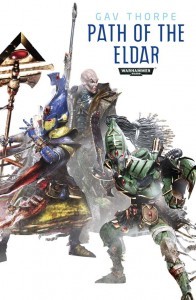 Quotes, extracts, thoughts and memoirs from different points of view can all be used in that narrative space between the end of one chapter and the next. But always for a good reason, to further enhance the experience of the reader, to deepen their understanding of the plot, characters or setting. The ‘Eldar Path‘ novels have a short piece of relevant eldar mythology prefacing each chapter. This gives readers some sense of the context of the Aspect Warriors and many other elements of craftworld society that I might otherwise have had to sneak in via dialogue or narrator exposition…
Quotes, extracts, thoughts and memoirs from different points of view can all be used in that narrative space between the end of one chapter and the next. But always for a good reason, to further enhance the experience of the reader, to deepen their understanding of the plot, characters or setting. The ‘Eldar Path‘ novels have a short piece of relevant eldar mythology prefacing each chapter. This gives readers some sense of the context of the Aspect Warriors and many other elements of craftworld society that I might otherwise have had to sneak in via dialogue or narrator exposition…
Prologues and Epilogues
And finally, where do Prologues and Epilogues fit into all of this? You know by now that there is no right and wrong answer. But, erring on the conservative, the chances are that the prologue and / or epilogue you have written might only be a first or last chapter. Too often I see prologues in particular that don’t serve as an separate, introductory chapter.
Ask yourself why you think the events portrayed in the prologue or epilogue are not part of the main narrative. They could be from a unique character perspective, for instance. Simple separation by time and space isn’t always a qualifier. You can also ask yourself whether the story would be comprehensive without the top and tail of the prologue or epilogue. If everything in between can make sense without them, then the chances are that it is a proper prologue or epilogue.
Epilogues shouldn’t be used to change the ending of the story. Consider The Usual Suspects. The revelation of Keyser Soze is integral to the rest of the story. It is not an afterthought. Your story should end when the final chapter finishes. An epilogue is an addendum, not a necessity. It might change the context of the ending, throw light on the event in a different manner, but it should not substantially change or undermine it.
Similarly, use a prologue to create context and expectation, but not to explain or provide exposition. It is a structural device, and in that sense quite artificial and not part of the story proper. Some good thoughts on both of these can be found here.
Like the elusive formula for the perfect sentence, paragraph or scene, there is no single solution to the question of how to best format and present your novel. Hopefully I’ve given you something to think about, and if you want to share any great examples of good or interesting structure, the comments thread is always open.
**To make sure you don’t miss out on any blog posts, you can keep up-to-date with everything Gav by signing up to my monthly newsletter. As a bonus, every other month I randomly pick a newsletter subscriber to receive a free signed copy of one of my books.**
Please Feel Free to Share:







July 19, 2017
Structural Engineering – Part One
 This blog post turned into a bit of a mammoth one, so I’ve split it into two posts for easier reading. Part one looks at chapter construction and transition, and part two will cover other ways to construct your novel (aside from using chapters), chapter titles / beginnings, and prologues and epilogues. Part two will be published in the next week, so keep an eye on my blog so you don’t miss out.
This blog post turned into a bit of a mammoth one, so I’ve split it into two posts for easier reading. Part one looks at chapter construction and transition, and part two will cover other ways to construct your novel (aside from using chapters), chapter titles / beginnings, and prologues and epilogues. Part two will be published in the next week, so keep an eye on my blog so you don’t miss out.
One facet of writing that doesn’t get talked about very much is the structural format on the page. I don’t mean the structure of the story – three act versus five act, for instance – but how you break down a written story into scenes, paragraphs and other divisions.
The way in which this is done can have quite an effect on the reading experience. Length of chapters can either entice or dissuade the reader to continue. Too long and they might leave the next chapter until later; too short and you have more breaks to give the reader the opportunity of stopping.
Choosing how to format and present your work is as important as the tone, style and quality of the words themselves. With Lorgar, my latest novel, I chose a very specific presentation style, that of short scenes numbered in the theme of a biblical annotation – being Book, Chapter and Verse. Hence the story starts at 1-1-1, the second scene is 1-1-2, the next chapter is headed 1-2-1, 1-2-2 and so forth. It gives the story a very deliberate style, especially contrasted with the non-numbered intercut chapters that frame the narrative.
I’m just going to talk about novella and novel-length works generally, although most of the principles can be applied to shorter works too, in the form of scenes and section breaks rather than chapters.
The Basics
Some writers, like Terry Pratchett, eschew the use of chapters. This is fine, but it doesn’t eliminate the need to think about presentational structure. I’ve tried a couple of times to write chapterless books in the past but the editors have asked me to present the book in a more traditional format. Probably for the best…
The default setting for a modern novel is to break it into chapters, each likely between 2,000-4,000 words. This gives roughly 40-50 chapters in a typical genre novel (which tend towards the longer side compared to ‘literary’ books, from about 80,000 up to 150,000 words, with the 100k mark being popular with agents and editors).
Unless you have a good reason not to arrange your novel like this, then chapters is the way to go. How long they should be is another issue. You need to keep in mind that each chapter is a sub-narrative with its own beginning, middle and end. For an idea of how this might work, have a look at my post on writing scenes. A chapter is therefore one or more scenes with its own structure, introducing, developing and then concluding an idea.
In my earliest synopses I used to plan chapters in advance to help me get the right amount of story into the commissioned word count. Over time, my experience grew and my planning got vaguer so that now I find that it holds me back if my plan is overly rigid in format. Sometimes in the writing of it, a chapter ends up being seven or eight thousand words long, and other times it might only amount to a thousand words.
Scrivener.
So, instead of planning the structure so tightly, I now write the story and then when it is finished I organise the scenes into a format. I use a spiffy program called Scrivener to write my first drafts these days, which makes handling chunks of text in this fashion very easy (unlike, say, a word processor that makes you cut and paste big swathes of text). In this manner I can swap out a scene from one chapter and put it into the next, or split a chapter in two, and so on.With this in mind, you can see the shape of your story much better. How you choose to divide your chapters then becomes a more considered affair than simply stopping when reaching an arbitrary length.
The final lines of a chapter and the start of the next are as important as the opening and closing of the whole novel. Whether left elated or deflated, content or expectant, each scene and chapter break is a milestone on the journey of the story – a milestone you control and should think about carefully.
Point of View
An obvious use of chapters is to signify a change in character viewpoint. George R R Martin does this relentlessly. It doesn’t have to be done in quite such a fashion, different points of view can comfortably sit next to each other within a chapter (or even within a scene if you are writing in that style). However, a chapter or scene change gives you the opportunity to switch POV.
Changing point of view between chapters means that you need to ensure the reader knows where and who they are with right from the outset of the next. If they are following one character on one page they need to know they are following someone else on the next.
The same applies when keeping point of view but making a chronological leap. It is possible to prime the reader with the end of the previous chapter, by referencing what is about to happen. For instance, if a chapter ends with the characters boarding a rocket to Mars and the next begins with them disembarking, you don’t have to explain that they have arrived at Mars. (On the other hand, if they haven’t landed on Mars you better make it obvious pretty damn quick!)
Other reasons for chapter breaks are leaps in time and geography. Rather than drag our reader through a laborious but uneventful procession from one place to another, a chapter break allows us to move the focus either in time or space (or both!). I bet you didn’t realise you controlled your very own literary TARDIS.
Pacing
 As to where these breaks should come, that’s a bit more of an arcane art than a science. A lot of writers, particularly those that work with scripts, talk about Story Beats. These are the rhythm of the action and plot, which carries the reader (in this case) through the story. They are like stepping stones from the beginning to the end, each moving the narrative onward. Not every chapter is a story beat as such, but it should be part of the build up or conclusion of one.
As to where these breaks should come, that’s a bit more of an arcane art than a science. A lot of writers, particularly those that work with scripts, talk about Story Beats. These are the rhythm of the action and plot, which carries the reader (in this case) through the story. They are like stepping stones from the beginning to the end, each moving the narrative onward. Not every chapter is a story beat as such, but it should be part of the build up or conclusion of one.
This is the reason I have adopted a more organic approach to my presentation process. I sometimes find that in the act of writing a scene it ends slightly differently from where I set out, or originally intended. If it’s part of the beat, this can lead to some awkward pacing issues, which is compounded if that scene appears in a middle of a chapter when it shouldn’t (or at the end, sometimes).
Chapter breaks can be thought of as:
• Beginnings – setting up expectation of what is to come. One example (often overused) is the cliffhanger ending. Some chapter endings might feel like endings but are in fact beginnings. They conclude a particular episode, but actually they serve to introduce a broader, longer beat or plot arc.
• Transitions – moving the beat toward its end via a smaller milestone. For instance, the protagonist has not yet had the required revelatory moment, but is put into a position to do so. Depending on how fast-paced and densely plotted your story is, you might not have any transitional chapter endings, it’s all bang-bang-bang from one beat to the next. The Beast Must Die is very much in this mould, with almost no downtime between chapters.
• Conclusions – the chapter ends with the delivery of the beat. This is where it can go wrong. If you have concluded the story beat, don’t obscure it by rushing in to the next, and definitely not in some misguided attempt to create false expectation with a cliffhanger. The end of the chapter is significant, and what it signifies is that a chunk of story has ended and another is about to start. Readers understand this, even if they don’t realise it.
The other thing about this is to be aware of where you are in your story. Beats and pacing vary, and so to can chapter lengths. You might need to introduce several characters from quite disparate sources at the beginning, jumping from one to the other in a series of short chapters. Conversely, the end of a novel might be contained within a single longer chapter. Be alert to whatever suits the flow.
Part two will be published in the next week, so keep an eye on my blog so you don’t miss out.
**To make sure you don’t miss out on any blog posts, you can keep up-to-date with everything Gav by signing up to my monthly newsletter. As a bonus, every other month I randomly pick a newsletter subscriber to receive a free signed copy of one of my books.**
Please Feel Free to Share:







July 16, 2017
Warbeast – David Gemmell Legend Award Winner!
 Well, what can I say – I really wasn’t expecting to be writing this blog post! When you’re up against the likes of Brandon Sanderson and Mark Lawrence, who are regularly nominated for (and win) pretty much every genre award going, you don’t really believe you could actually win. I’m supposed to be doing re-writes for Ashes of Prospero today, but I’ll have to hope the editors will be understanding…
Well, what can I say – I really wasn’t expecting to be writing this blog post! When you’re up against the likes of Brandon Sanderson and Mark Lawrence, who are regularly nominated for (and win) pretty much every genre award going, you don’t really believe you could actually win. I’m supposed to be doing re-writes for Ashes of Prospero today, but I’ll have to hope the editors will be understanding…
The Awards Ceremony
I attended the awards ceremony last night with Black Library representatives Kate Hamer, Hannah Hughes and Rachel Harrison. The night started off with a celebration, as Alessandro Baldasseroni won the Ravenheart Award for Best Cover Art for ‘Black Rift‘ by Josh Reynolds. As well as writing for Black Library, my original fiction series Empire of the Blood is published by Angry Robot, so I was really pleased to see fellow Robot author Megan E. O’Keefe win the Morningstar Award for Best Newcomer for her novel Steal The Sky.
And then it was the turn for Joanne Harris, author of Chocolat, to present the Legend Award for Best Novel. I know I made it to the stage as I’ve seen photos, but as for what I said I can’t exactly remember – it’s all a bit of a blur. In any case, I now have a beautiful half size replica of Snaga, Druss the Deathwalker’s axe from the works of David Gemmell (beautifully crafted by the Raven Armoury).
Just in case I missed anyone out on the night, here are the thank you’s I wanted to give:
Voters
Thank you to everyone who took the time to vote for Warbeast in both the longlist and shortlist – obviously I wouldn’t have won without your support. Age of Sigmar was controversial when Warbeast was published, with many readers vowing never to read any of the associated fiction just on principle, and I hope that winning this award will persuade anyone who is still of that mindset to at least dip their toe in the water and experience the new world.
Marc Gascoigne
I have a lot to thank Marc Gascoigne for. For those who aren’t familiar with the name, Marco was responsible for setting up Black Library. As its first editor he commissioned me to write my first short story, Birth of a Legend, and when he left to set up publishing imprint Angry Robot for Harper Collins, he commissioned me to write Empire of the Blood – my original swords and sandals fantasy series. Over the years he has been a good friend and mentor – so thank you Marco.
Nick Kyme
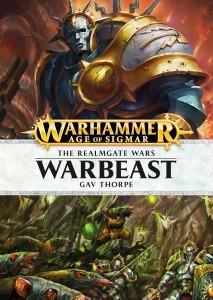 Black Library readers will no doubt be familiar with editor and author Nick Kyme. Not only has Nick edited several of my books, he has also been a great sounding board, champion of my work, and weathered many a storm with / from me when the going has got tough. Our good relationship was critical while I was writing Warbeast – it was a new setting, one that I didn’t know if I even liked yet, being written at a time when I was disillusioned with the direction Black Library was taking. Nick kept me sane, and got Warbeast to the point of, well, winning the Legend Award for it! Thank you Nick. If you’re interested in the struggles I had writing Warbeast, you can read about it here.
Black Library readers will no doubt be familiar with editor and author Nick Kyme. Not only has Nick edited several of my books, he has also been a great sounding board, champion of my work, and weathered many a storm with / from me when the going has got tough. Our good relationship was critical while I was writing Warbeast – it was a new setting, one that I didn’t know if I even liked yet, being written at a time when I was disillusioned with the direction Black Library was taking. Nick kept me sane, and got Warbeast to the point of, well, winning the Legend Award for it! Thank you Nick. If you’re interested in the struggles I had writing Warbeast, you can read about it here.
My Partner, Kez
Thanks also go to my partner Kez. Without her gentle but persistent prompting for me to actually tell people about the awards, and not be so British about the whole thing, I’m sure the number of votes I received would have been significantly lower. She also knocked up a lovely “congrats” banner for me to come home to. Thank you, Kez.
The Awards Team
My final thanks go to Stan and Anne Nicholls, Alex Davis, and the rest of the team behind the Awards. Thank you for taking the time to honour David Gemmell, a man who has inspired me since I was a teenager. And thank you for my wonderful trophy – which you can see more of in this video:
**To make sure you don’t miss out on any blog posts, you can keep up-to-date with everything Gav by signing up to my monthly newsletter. As a bonus, every other month I randomly pick a newsletter subscriber to receive a free signed copy of one of my books.**
Please Feel Free to Share:












